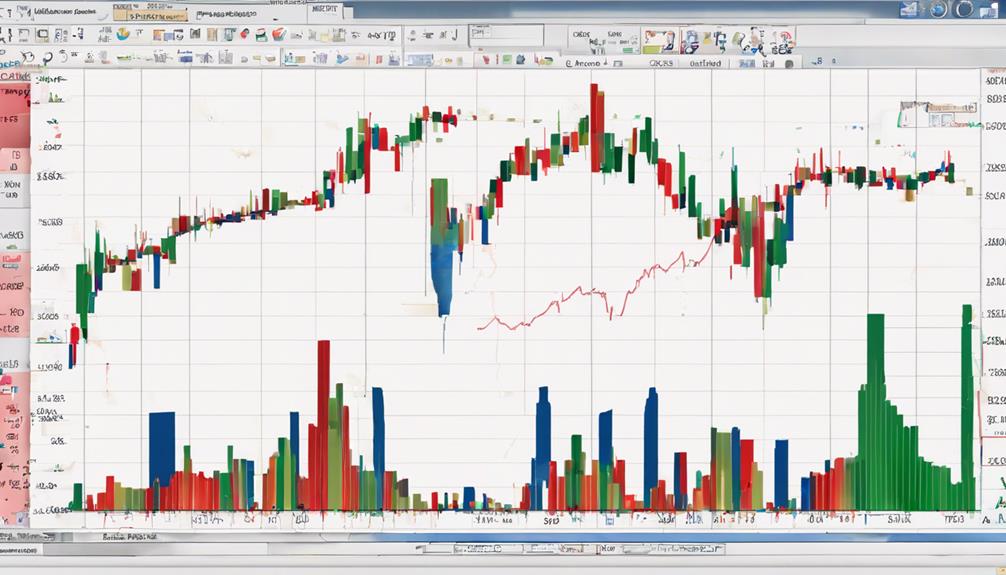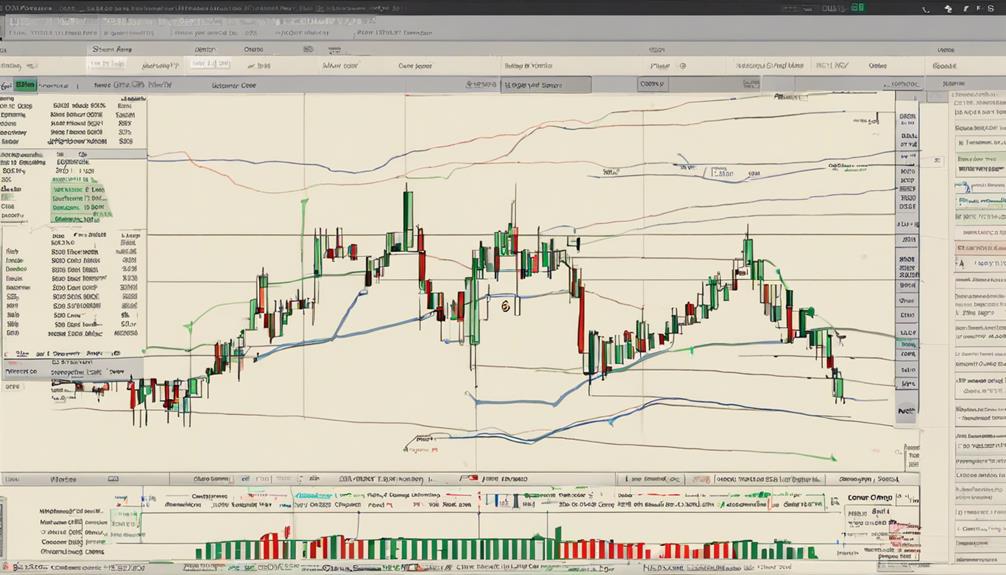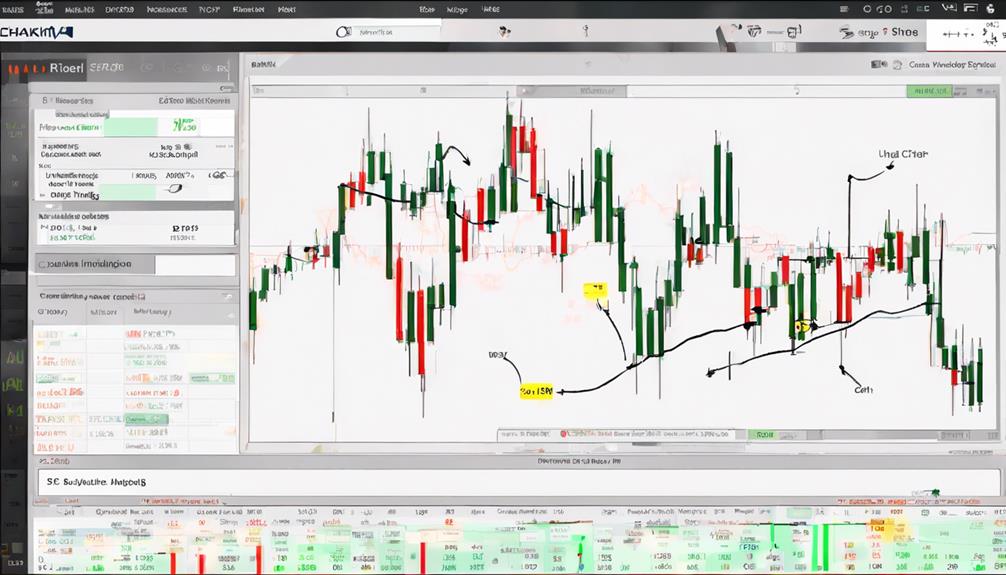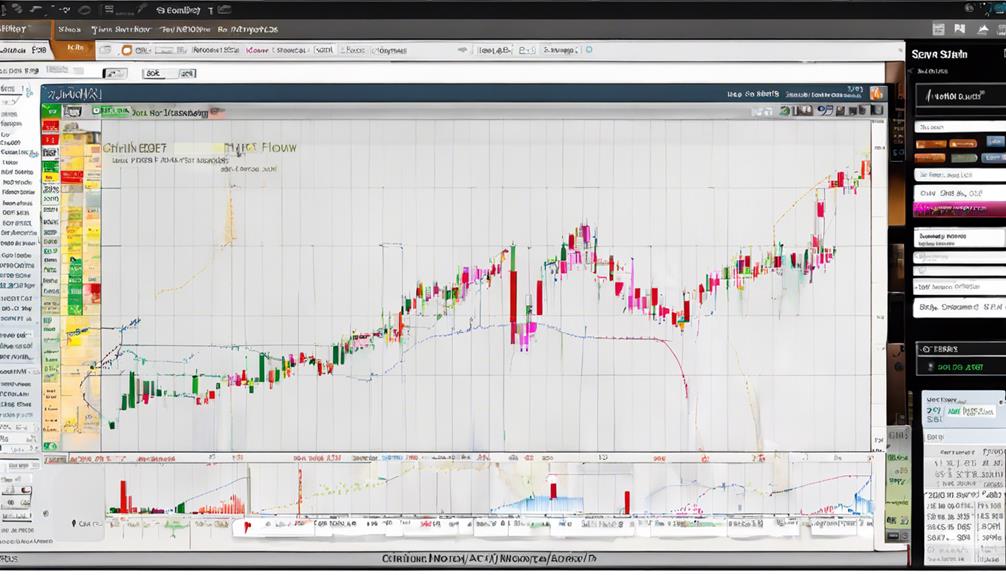Understanding the nuances of the Chaikin Money Flow (CMF) indicator can significantly enhance your trading decisions.
From grasping its calculation intricacies to interpreting market trends and implementing effective trading strategies, the CMF offers a wealth of insights for traders.
By considering key tips for utilizing this indicator, you can unlock its full potential and potentially gain an edge in the markets.
Whether you are a novice trader seeking to refine your skills or an experienced investor looking for new tools, delving deeper into CMF utilization could prove beneficial for your trading journey.
Understanding CMF Calculation
The calculation of the Chaikin Money Flow (CMF) indicator involves deriving the Money Flow Multiplier and Money Flow Volume from price data and trading volume to assess the prevailing buying and selling pressures in the market. The Money Flow Multiplier is computed using the formula ((Close – Low) – (High – Close)) / (High – Low), reflecting the relationship between the closing price and the trading range for a specific period. Money Flow Volume, on the other hand, is obtained by multiplying the Money Flow Multiplier by the trading volume during that period.
The CMF formula combines these components by summing the Money Flow Volume over a specified timeframe and dividing it by the sum of the corresponding trading volumes. This calculation results in a value that indicates the strength of buying or selling pressure in the market. Traders typically use 20 or 21 periods for CMF calculation, as it provides a reliable basis for technical analysis. A key aspect of interpreting CMF is observing when it crosses zero, as this can signal shifts in market sentiment from buying to selling pressure or vice versa.
Interpreting Market Trends With CMF

When analyzing market trends with the Chaikin Money Flow (CMF) indicator, it reveals crucial insights into the prevailing buying and selling pressures impacting asset prices. The CMF, known as a Money Flow oscillator, assists traders in confirming trends by analyzing the accumulation and distribution of assets based on price movements.
Key Points:
- Interpreting CMF Values:
- CMF values above 0 indicate buying pressure and an uptrend, while values below 0 suggest selling pressure and a downtrend.
- The typical range for CMF is between -0.5 and 0.5, rarely reaching extremes of -1 or 1.
- Traders should focus on how CMF interacts with the zero line and how the indicator crosses it to confirm trends.
- Identifying Buying and Selling Pressures:
- Values between 0.05 to 0.25 reflect buying pressures, indicating increased demand for the asset.
- Conversely, values between -0.05 to -0.25 indicate selling pressures, signaling higher supply and potential price declines.
- CMF values between -0.05 and 0.05 suggest a period of indecision or uncertainty in the market, highlighting a potential trend reversal or consolidation phase.
Implementing CMF Trading Strategies

Analyzing market trends through the implementation of CMF trading strategies offers traders valuable insights into potential buying and selling opportunities based on the Chaikin Money Flow indicator's signals.
One effective strategy is the CMF Zero Line Crossover Strategy, where traders buy when CMF crosses above zero and sell when it drops below. Additionally, employing the CMF Divergence Trading Strategy can help identify potential reversals by detecting divergences in line with caution and confirmation.
To enhance the accuracy of signals, traders can combine CMF with moving averages for trend confirmation, filtering out market choppiness around the zero level. Incorporating the Chaikin Money Flow Moving Average Crossover Strategy by adding a 200 EMA can further assist in identifying optimal long and short entries.
Furthermore, traders can look for divergences aligned with the 200 EMA trend and utilize hidden divergences for high probability setups when leveraging the CMF indicator. By integrating these strategies, traders can make more informed decisions in the market.
Leveraging CMF for Intraday Trades

Leveraging the Chaikin Money Flow (CMF) indicator for intraday trades provides traders with valuable insights into money accumulation and distribution dynamics within the market. When using CMF for day trading, it is essential to consider the following:
- Understanding Buying and Selling Pressure: CMF helps measure the buying and selling pressure present in the market throughout the trading day. Positive CMF values indicate buying pressure, while negative values suggest selling pressure.
- Interpreting Trading Signals: Look for CMF values above zero for bullish signals and below zero for bearish signals in intraday trading scenarios. These signals can help traders make informed decisions based on the current market sentiment.
- Identifying Trend Reversals: CMF can be utilized to identify potential trend reversals or confirm existing trends in intraday trading. By analyzing CMF alongside volume data and price action, traders can better understand market dynamics and anticipate possible trend changes effectively.
Can the Chaikin Money Flow Indicator be Used in Conjunction with Bollinger Bands for Trading?
Yes, the Chaikin Money Flow Indicator can be used in conjunction with Bollinger Bands for profitable trading strategies with Bollinger Bands. By combining these two technical analysis tools, traders can gain a more comprehensive understanding of market conditions and potential entry or exit points for their trades.
What is the Relationship Between Chaikin Money Flow and ADL in Technical Analysis?
Chaikin Money Flow and ADL are both important indicators in comprehensive technical analysis understanding. CMF measures the money flow volume over a specific period, while ADL is a cumulative indicator that reflects the overall flow of money in or out of a stock. Mastering these indicators is crucial for successful trading.
Optimizing Day Trading Settings for CMF

To optimize day trading settings for the Chaikin Money Flow (CMF) indicator, traders often adjust its parameters based on their individual strategies and preferences. CMF is a valuable tool in day trading as it helps identify buying and selling pressure in the market. When the CMF rises above zero, it suggests increased buying pressure, potentially indicating an upward price movement.
Traders experiment with different CMF settings since there is no universal approach, adapting to suit their specific trading styles. Combining CMF with other analysis methods can enhance the accuracy of trading decisions by offering a more comprehensive view of the market.
Effectively utilizing CMF requires a deep understanding of its signals within the context of market conditions and trend analysis to make informed trading choices. By fine-tuning CMF settings and interpreting its signals accurately, day traders can make more precise decisions and potentially improve their trading outcomes.
Frequently Asked Questions
What Is the Best Setting for Chaikin Money Flow?
For optimal use of Chaikin Money Flow (CMF), selecting a 20 or 21 period setting is common. Traders seeking longer-term insights may consider a 50-period CMF. Adjusting above 30 reduces sensitivity, while below 20 increases it.
Is Chaikin Money Flow a Good Indicator?
Chaikin Money Flow is a valuable indicator for evaluating market sentiment by measuring buying and selling pressure. Its ability to confirm trends, identify reversals, and gauge price strength makes it a useful tool for traders seeking informed decision-making based on accumulation and distribution dynamics.
How Do You Read Chaikin Money Flow?
To read Chaikin Money Flow, observe values above zero for buying pressure and below zero for selling pressure. Analyzing fluctuations around zero helps confirm market trends. Understanding CMF assists in identifying decision-making periods and market pressures.
What Is the Formula for the Chaikin Money Flow Indicator?
The formula for the Chaikin Money Flow Indicator involves calculating Money Flow Multiplier and Money Flow Volume. By summing the Money Flow Volume over a specified period and dividing it by the volume sum for the same period, it assesses buying or selling pressure.
Conclusion
In conclusion, mastering the Chaikin Money Flow indicator requires a solid understanding of its calculation, interpretation, and application in trading strategies.
While some may find the CMF overwhelming, its value in confirming market trends and aiding in buy/sell decisions cannot be overstated.
By incorporating the CMF alongside other indicators and adjusting settings to suit individual preferences, traders can enhance their trading decisions and achieve greater success in the market.
